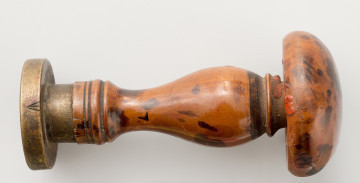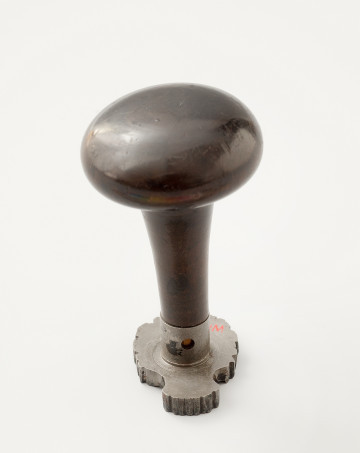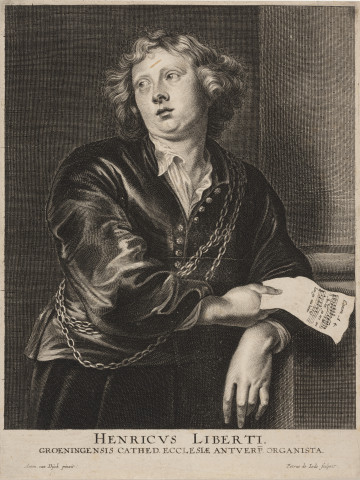
Seal matrix of the Administrator of the Wilanów Estate
Museum of King Jan III's Palace at Wilanów
Part of the collection: Varia
In the collection of the Museum of King Jan III’s Palace at Wilanów, almost forty sphragistics pieces – seals or seal matrixes – have survived. The term ‘sphragistics’ is derived from the Greek word ‘sphragis’ standing for a seal (alternatively called sigillography after the Latin word ‘sigillum’) and defines the branch of auxiliary historical sciences where research focuses on interpreting the meaning of seals and determining the circumstances of their creation. The history of sphragistics dates back to the 19th century; at that time, it was noticed that seals could be regarded as a valuable source material contributing knowledge on political, heraldic, diplomacy and many other arrangements.
The set of seals and seal matrixes preserved in the collection of the Museum dates back to the 18th century and is related not only to the Wilanów estate. It includes seals that can be associated with specific persons – the owners of Wilanów – but also seals documenting the system of administering estates, not only the Wilanów estate. The brass seal matrix was intended for ink impression seals. The impressed part is round and convexly engraved (which means that the impressed pattern is based on convex forms, as in modern seals). The seal was provided with a wooden mushroom-shaped handle with a profiled and bulging shaft. In the seal field, there is a escutcheon with the Pilawa coat of arms in the blue field topped with a nine-stick count’s crown. The escutcheon is surrounded with a circumscription written in majuscule in Polish: + ADMINISTRATOR + OF THE WILANÓW ESTATE. We can regard this seal as a valuable souvenir and document of the functioning, management and administration of the huge Wilanów demesne, which involved the administrator’s versatile efforts. J. Żukowski writes (idem, ‘Office of the administrator of the Wilanów estate’ as a source of materials concerning rural and suburban building development in the 19th and early 20th century, in: ‘Miscellanea Historico-Archivistica’, vol. XXIII): ‘The administrator of the estate was in charge of the demesne of estates and managed all branches of the property in the land under his management. ... Without the administrator’s assignat, no amount could be paid from income funds, and no products could be given in any production department. The administrator also supervised and organised all building works and investments in the demesne under his management...
Author / creator
Dimensions
entire object: height: 7,3 cm, width: 3,5 cm
Technique
carving,rolling
Material
brass,wood
Owner
Museum of King Jan III's Palace at Wilanów
Identification number
Location / status

Museum of King Jan III's Palace at Wilanów

Museum of King Jan III's Palace at Wilanów

circa 1632
National Museum in Szczecin
DISCOVER this TOPIC
Castle Museum in Łańcut
DISCOVER this PATH
Educational path